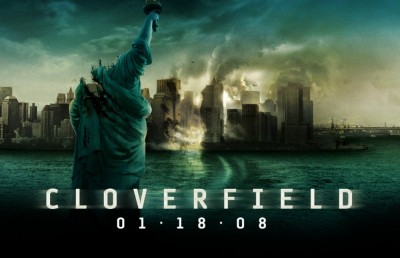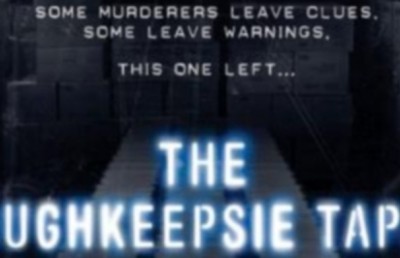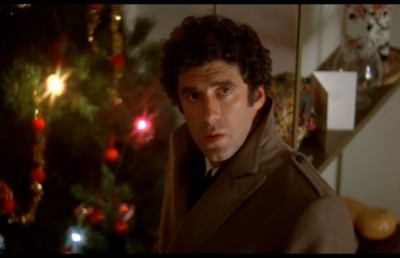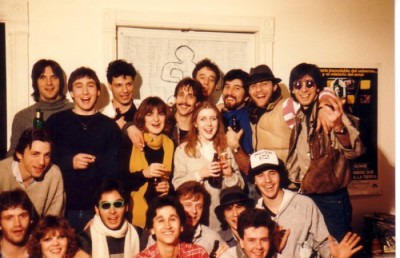Grave Disturbance
The Descendant
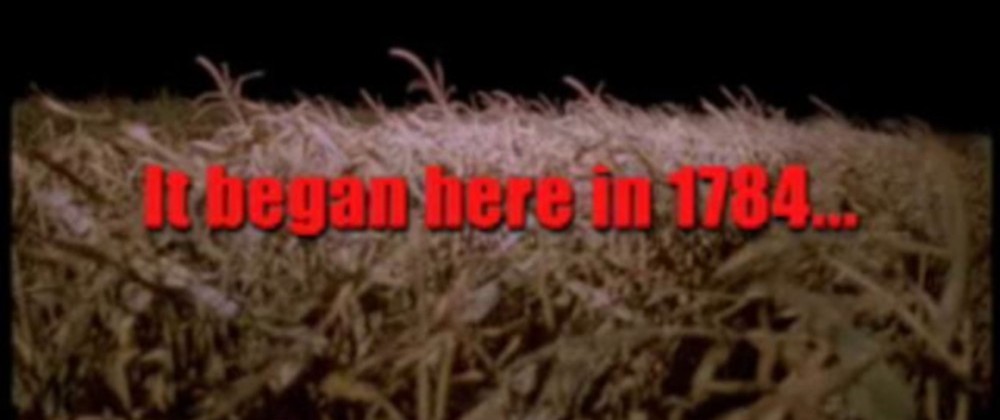
The Descendant (2007) is the debut feature from Canadian filmmaker Philippe Spurrell. I quite like this film, though it suffers as many contemporary genre films do from genre expectations; expectations the film raises and refutes, riffs upon and plays against.
Though The Descendant is a horror film by any definition, and adheres to genre conventions in its orientation, it is also a horror movie some genre buffs will grow impatient with due to its discretion and lack of overt mayhem. There are no lurid exploitation elements, no overt violence or gore, components which have been de rigueur since the 1960s. Being a horror film, though, those who might truly enjoy its restraint, measured pace and ultimate destination are likely to pass it by, fearing the worst.
Thus, The Descendant is that unloved prodigy, a horror film for audiences who hate horror films. That said, it is finding its audience and has enjoyed a number of successful festival screenings to date.
The Descendant is sumptuously mounted and beautifully filmed, extrapolated from an obscured strata of 18th Century Quebec history many still prefer remained buried. Spurrell orchestrates this (literal) resurrection via archetypes that will be familiar to any genre devotee: the guilt-ridden Grandmother, the petulant Grandpa harboring unspoken secrets, the townspeople who might as well have stepped out of another remake of Dracula, even if they are in a contemporary Quebec border village. By so completely submerging its revelation –perhaps to dramatically ensure it is revelatory– the film cheats a bit, in that there is nothing we see about the Duke family history to overtly link them directly with the climax’s tip-of-the-hand. But that’s the point: this family has so completely buried its past, it’s truly hidden from sight, until its protagonist’s detective work unveils the tentative links leading to the final act.
Despite the misgivings some have expressed about the script’s structure, it must be noted that the elements necessary to the climax are introduced from the first shot of the film (an ominously lit wall-hung quilt), though one is unlikely to piece (pun intended) the clues together due to the setting, really; were this set in the American South, we’d anticipate and wholly expect its climactic turn. The clues provided are experienced obliquely, in that we’re not sure what to make of them as they are presented, often with great subtlety. Some of these moments (e.g., the weathervane) work beautifully and are nicely done; some of these clues (particularly the folderol involving a framed photo) play too obliquely.
There are aspects of the film I continue to find disconcerting. Most problematic are the inconsequential passages of time at key narrative junctures (e.g., James’s last full day at his grandparents home) in a rush to get to the pivotal nighttime sequences: these are the weakest script passages, and no amount of finessing on the part of the direction or editing can cover these unfortunate lapses (they’re not as destructive as the similar lapses in John Carpenter’s Prince of Darkness, but similarly problematic). One cannot help but wonder what’s happening for what have to be 12 hour stretches in the narrative scheme of things.
Nevertheless, this is an ambitious attempt at doing something with political content in a genre (the ghost story) that traditionally refutes any real social or political context. The Descendant is a compelling, satisfying and earnest film that attempts much in its genre framework, boasting a climax that redeems any and all visible seams for this viewer. I look forward to whatever Philippe has up his sleeve next!
To get to the heart of The Descendant (while coyly evading any spoilers), I interviewed Philippe in 2007:
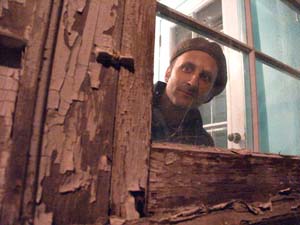
Stephen R. Bissette: Philippe, could you share with us a bit about your background, and lead us up to what got you into filmmaking and the creative life?
Philippe Spurrell: Besides being the black sheep of my family, I had a musically gifted father who decided not to follow his creative dreams. In the name of financial security he always discouraged me from taking on an artistic career so when I left home as a teenager, I rebelled in a big way. I lived a lot of my life in Montréal’s west end and hooked up with a lot of really creative people there who exposed me to the beautifully unstable life of a creative artist. To earn my living I worked in the corporate world but that lasted a mere 5 years, mostly part time. After that I became a workaholic self-employed creative entrepreneur doing as many things film-related as possible. Some well-adjusted well-meaning people get in with a bad crowd and turn to a life of drugs and crime. I got in with a diverse crowd of artists and was hooked on a creative lifestyle from early on. I studied film at Dawson College and was given a lot of encouragement by a great bunch of professors there. When I got to University I opted for what I thought would be better for me than studying film production; I majored in Literature with a minor in Marketing. During that period and beyond, a major factor in my creative development was my decision to live without a television or computer in my home for nearly ten years. It forced me to consume other forms of stimulation by going out into the socially interactive real world.
In 1992 I found an outlet for my strong desire to expose people to great works of cinema. I established Le Cinéclub de Montréal: “The Film Society” and have been running it ever since through the screening of genuine motion picture film (mostly 16mm) to an interested audience. Through my film society activities I see myself as a missionary of sorts trying to save people from the temptation of consuming over-hyped mind-dumbing sequels from Hollywood’s “sausage factory”. “The Film Society” also encourages an alternative to the more passive act of experiencing cinema in solitary private seduced by the oxymoronic notion of “Home Theatre.” Running the organisation all these years and building an important celluloid archive has exposed me to the more classic forms that influence my filmmaking style. A style some would say is “old fashioned.” I call it “disciplined.”
SB: What filmmaking had you done prior to The Descendant?
PS: I made my first film at the age of twelve (a Bruce Lee movie spoof called Fists OF Veneance (sic)) and about 5 years later when I started to think about what I wanted to do with my life, I remembered back on how thrilling it was to make movies. From the age of 17 to 30 I made an average of one short film a year including Hollyweird which went on to play numerous festivals and picked up a number of awards. Instead of properly capitalising on that film’s success, I made the mistake of over-ambitiously attempting to make a multi-million dollar road movie about a black South African coming to Canada seeking justice for his father’s death in a diamond mining tragedy. I spent way too much time, money and effort on this project that went nowhere…but I did learn a lot about the movie biz. From there I ended up working on many shorts and feature indie films as producer, production manager, actor, assistant director, special effects projectionist, etc. I even ended up in Bangladesh in 1996 as chief consultant on a large scale bio-pic on the life of that country’s national poet. I spent years basically helping everyone else get their films made at my expense. However, lots more valuable experience was gained until I was finally ready to throw all my life’s savings at my dream of making my first feature.
Oddly, The Descendant began as a short film. It later morphed into a feature when I realised that I was guilty of trying to pack a feature-length concept into a half hour. That decision led me to the most difficult undertaking of my life, not helped by the fact that I insisted on shooting in 35mm on a very low budget. In the end it was the right decision because it did help jump start my career. Had I chosen to shoot on digital video, I would not be taken as seriously. At the very least, my film’s production values firmly state; “I have arrived and I am able.”
SB: The Descendant is rooted in a very specific and fairly esoteric –one could even say deliberately buried– slice of Québec lore. When did you first hear or read about the history that inspired your film?
PS: I began with an unusual storyline for my film, the structure of which was inspired by very old issues of EC comics. The idea was given a soul when I chanced upon an investigative television piece about a long lost cemetery in the Eastern Townships region of Québec. That one item shook me up and inspired me enough to carry me through the five years it took to complete production. To reveal the film’s inspiration is to reveal its punch line. All I can say is that it is a shockingly remarkable part of a history shared by both Americans and Canadians.
SB. Fair enough, I’ll not give it away, either. How did you flesh out that historical inspiration into the initial draft of the screenplay, and was it a solo or a collaborative venture?
PS: For the short film version it was merely part of the climactic ending with but a few hints of what was to come. For the feature version script, I collaborated with Joel A. Miller, a writer originally from Wisconsin. The two of us permeated the entire script with both generous and quite cryptic hints at the finale. Joel apparently approached the task of rewriting with a “Wisconsinese” approach and while listening to a lot of music by Ry Cooder. It was also his idea of incorporating poetic works by Emily Dickinson. I decided to place her work in a scene inspired by a David Lynch film. It added effective irony to a scene in which our main protagonist gets a sound beating (much like the “Candy Coloured Clown” beating that Kyle MacLachlan receives in Blue Velvet).
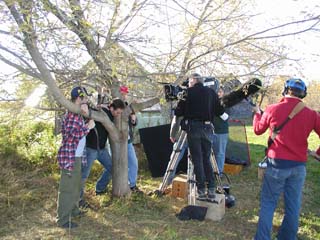
SB: Given the regional nature of the news item, I wonder –how much did the landscape have to do with the preparation and revisions of the script? Did you scout locations (even informally) before or during the writing process?
PS: Location scouting was done after the first drafts of the script were done. Many of the perfect locations were found by very thorough scouting but everything ended up being within a fairly short radius. Once the main farm location was found, new scenes were written to incorporate the most interesting parts of it. Being a low budget effort, my approach was to work with what I had. I own an antique upright gramophone. That was incorporated to a point where it almost becomes a character. What was a piano in the original script eventually became a harmonica for largely economic reasons. Even the prop bones were painstakingly extracted from nearby roadkilled deer (The extraction process is a whole gruesome story in itself!)
SB: We’re a long way from the Canadian tax shelter boom years of the 1970s and ’80s. How did you go about pulling together the production, and the financing, before you got into casting and filming?
PS: As I mentioned, I rolled the dice on this project with all of my life’s savings but that was still not enough to complete it. At the eleventh hour, a fellow film buff from the UK that I met online came through with a good chunk of the financing which in turn attracted additional financing from a group of private local investors who were impressed with what was filmed to that point. I knocked on many doors looking for completion funds and ultimately found it in the least likely sources. A lot of it was luck but I do believe that you can make your own luck.
SB: How did you go about casting the film?
PS: From the outset, I knew that the very limited budget would not allow for me to hire union talent. With Montréal having a very limited non-union English-speaking talent pool, I also knew that I had to cast a wider net to find really good actors. Auditions were held in Ottawa, Toronto, Montreal and elsewhere. A lot of effort went into the casting and with the film being shot over a 3 year period, some of the casting had to be redone (as two of the very young actors aged too much). My lead player, Tadhg MacMahon, was spotted on stage at an outdoor performance of a Shakespeare play and he proved to be quite accommodating considering the many shooting days spread out over a few years.
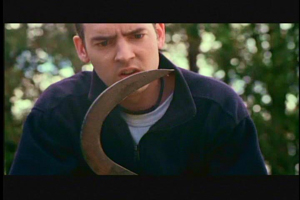
SB: What determined your final choices, and which roles ended up being the most difficult to cast?
PS: The script called for mostly older actors and one of the things I learned is the value of upping the age of the characters rather than trying to cheat the age of younger actors. A typical shortcoming of low budget films is when it feels like the director asked all of his friends to “help out” by playing bit parts or leads. The result is, for example, a doctor or older uncle character unconvincingly played by too young an actor. Or bar scenes where the extras all look like crew members from a film set. Older faces tend to naturally have more character so it follows that the film will have more character with those older faces. Of course, this shouldn’t be done at the cost of a good performance in even a small role. The most difficult role to cast was for a character that ultimately got cut out of the picture. When James visits the cemetery he encounters an eccentric gravekeeper and has an eerie brief exchange with him. What happened was a case of a brilliant stage actor who aced the audition but completely froze up on set with a 35mm camera pointed at him surrounded by a crew. I took a chance on it but was not able to recast and reshoot the scene. The actor who was originally supposed to play the gravekeeper was instead cast as the main antagonist, Victor. This was a good move since his performance in that role made for some of the highlights. Another interesting thing I learned is that if you can’t afford an animal wrangler for scenes requiring a dog, go with a very old dog. Very old dogs are less fidgety and seem to obey commands better.
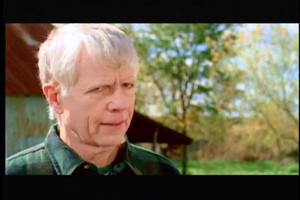
SB: The physical production of The Descendant is impeccable –let’s talk about the talent behind the camera for a bit. How did you pull this extraordinary support together?
PS: Having not made a film in quite a while, I decided that whatever I do should look impressive visually. For aesthetic and economic reasons I considered 16mm. When I had my first meeting with director of photography, Lorenzo Negri, he managed to convince me of the advantages of shooting 35mm; more latitude, higher resolution, no blow-up costs etc. His motto was “Why rent a Cadillac when you can rent a Rolls Royce.” The challenge was to secure equipment and film stock at the lowest cost possible. We were very fortunate to have the private sector help us in the way that they did. In the end, it actually cost me less to shoot in 35mm than HD video. But it wasn’t enough to have all this great gear and film stock. I needed a camera crew that knew how to work well with all the slick heavy machinery. I have to say that the most important member of the camera crew is the 1st assistant camera, also known as focus puller. That is the person who will make sure the images stay in proper focus. In that way, they will help you avoid costly reshoots. In total I worked with seven different first assistant camera people. Only once did I not properly check their references and that was the one time over half a day’s worth of shooting was ruined through overly soft images. One of the hazards of low budget filmmaking on this scale is that some people will try to bluff their way onto the team by exaggerating their qualifications. That’s OK for a third assistant director or production assistant but very risky for a first assistant camera or sound recording positions.
Originally from Italy, Lorenzo Negri brought European sensibilities to his style. Since I wanted to focus most of my attention on working with the actors I let the cinematographer take the lead on most of the set-ups. For scheduling reasons, Lorenzo was eventually replaced by Bulgarian director of photographer Ivan Gekoff whose past credits include camera work for Tarkovsky [ed., he worked a few days as a camera assistant on Stalker]. He too drew on European influences to give the film its visual style. The approach was classical and both D.P.‘s knew how to achieve that. The biggest challenge to them was matching lighting and seamlessly blending the numerous types of film stocks we were working with. One kitchen scene was shot in five separate periods in three different years with two different types of film stock!
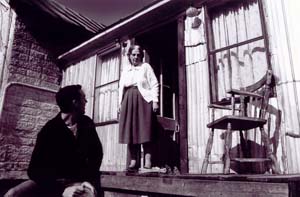
SB: How long WAS the shoot? And how did you keep up your energy over such a long process?
PS: Filming began in October of 2002 and five shooting periods later it ended in the spring of 2005. (33 days in total I believe). What kept me going was my adopted attitude that this was something that my very life depended on. Besides that, I had an important story to tell which gave a voice to the voiceless. I recently read an interview with a filmmaker who said that since a film shoot is so grueling, you need to physically train for it. Like for a marathon. I generally eat well and excercise regularly and can tell you that it really helps reduce the inevitable burn out factor. Seriously.
SB: Other than the duration, what was the toughest part of the filming?
PS: One of the down sides of low budget filmmaking is the fact that the writer-director often has to do many of the tasks that a producer would. Every morning I would wake up thinking I would not make it through the day but knowing how many other people were counting on me, I summoned the courage to get the most out of it I could. Taking on the bulk of producer duties added enormous pressure and I think the end product suffered as a result. I ended up doing so much of the work myself. I recall in 2003 after three long days of shooting that ended at 5 a.m., I decide to return all the rented film equipment myself (to save money of course). On my way to the first drop off, I got stuck in traffic and ended up falling asleep at the wheel from sheer exhaustion. The guy I brought along to help keep me awake also fell asleep! Considering this huge filmmaker-as-producer handicap, I pulled it off and I am still proud of the film…if only for having completed the damn thing!
SB: Let’s get into the narrative component, without betraying key story points or revealing the climax. In some aspects, the film embraces quite traditional genre elements –the village bar, suspicious locals, dread of outsiders, the elders with ‘secret knowledge,’ etc. are archetypal, dating back to Bram Stoker and the various Dracula films. Were these conscious evocations of tried and true trappings, or did they simply emerge during the writing process?
PS: I’d have to say that these elements emerged from the writing process. No doubt the reflected beams of light from tons of classic works running through my 16mm projector had burnt themselves into my subconscious. (Including the early version of Invasion of the Body Snatchers). Early drafts of the script had a lot of what my co-writer called “ineffective, menacing moustache twirling from a distance.” He wisely forced me to make the characters confront each other more directly, face to face.
SB: Artifacts of the past, from weather vanes to photographs, play a key role, along with a certain heirloom I won’t mention here. All are key visual components of your narrative tapestry, and had to sustain an illusion of genuine age under considerable scrutiny of the camera (and audience). How did you go about creating these, and ‘aging’ them?
PS: Coffee and tea. That’s right. It’s as simple as dipping items and fabric in coffee or tea and working it over with a wire brush. That, and spraying on a light layer of glue before tossing dirt on it. When shooting film or video, pure white surfaces can be problematic for lighting. The main location was a chalky white farmhouse that we sprinkled with very diluted black water paint. It effectively dulled the white and made it look more run down. A lot of the art direction, costumes and sets were done by one very talented person, Patricia McNeil, the film’s production designer. She was always the dirtiest person on set as she went around aging everything. Another talent worth noting is photographer Mia Donovan who managed to stage and recreate old photographs to look as though they were taken many decades ago. These photographs play a big role in the film so they had to be convincing.
SB: For a 21st Century genre film, THE DESCENDANT’s restraint is notable. What isn’t seen, or consciously seen, is more important than what is seen or shown. Though 1999’s one-two punch of The Sixth Sense and The Blair Witch Project seemed to denote a return to this kind of Val Lewtonesque genre aesthetic, genre audiences still seem intent on a certain quotient of graphic mayhem as a necessary ingredient. You’ve deliberately ignored such expectations. Has this been a liability with festival audiences –too bloodless for horror fans, too disturbing for general audiences?
PS: I believe that with the recent pointlessly graphic and even disturbing mean-spirited direction much of the genre has taken, my film can be seen as a welcome oasis. I have difficulty with applying the “horror” label to it. I prefer to call it “a supernatural drama” if only to not disappoint genre fans who are today led to expect copious amounts of gore. At one festival screening, it was inappropriately slotted at midnight in a category called “Terrorvision.” It ultimately received a mixed reception that night by a partly drunken and mostly bloodthirsty crowd not prepared for a half intelligent, quiet ghost story. For that, I blame the careless programmers who were more eager to fill up their horror subsection than anything. I actually set a personal goal of making a film that goes against the modern trend. Of particular importance to me was to minimize the typical misogyny found in modern commercial films in general. I like to think that I created strong female characters or at least female characters that triumph in the end. At one large festival I did promotion in several lineups by way of handing out flyers and proclaiming: “Finally, a genre film that is chick-friendly and light on blood.” Subsequent comments from the fairer sex supported my claim. As far as it being too disturbing for general audiences; whatever graphic content there is, is less disturbing than a typical episode of television’s “CSI.” What many might find disturbing is the underlying historical subject in combination with images of mutilated flesh, however briefly it appears at film’s end. Another deliberate point was to avoid graphic language. This pays off in the one scene where one particularly offensive line packs more of a punch than if the film would have been laced with graphic language throughout. Again, effectiveness is often better achieved with restraint.
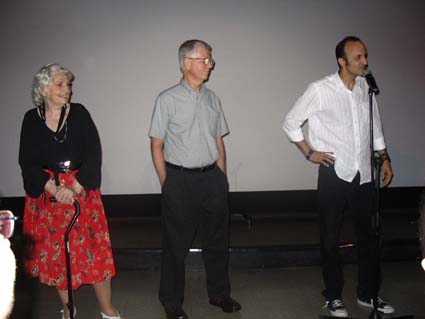
SB: Well, thanks for your time Philippe, and good luck with getting your film distributed.
PS: Your welcome.
Visit The Descendant’s official website.
Visit Stephen R. Bissette’s website.
If you would like to blog along with Stephen.


